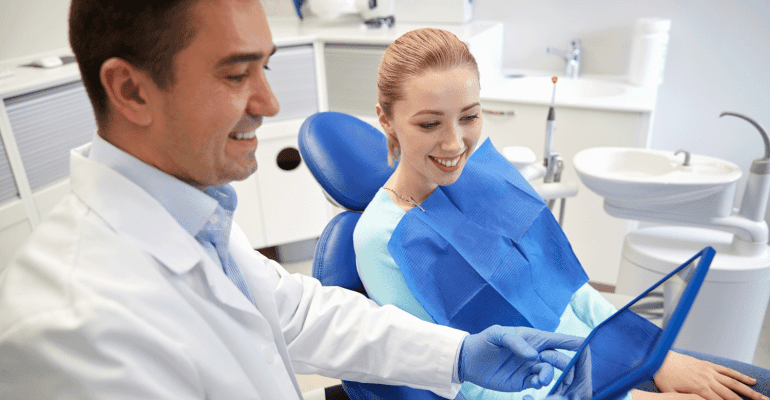On your first Worcester dentist visit or to our Uxbridge or Taunton Dental offices, we will take a full health history. On follow-up visits, if your health status has changed, make sure to tell your dentist. Here’s what you can expect during most trips to the dentist.
A thorough cleaning
A dental hygienist or dentist will scrape along and below the gum line to remove built-up plaque and tartar that can cause gum disease, cavities, bad breath and other problems. Then he or she will polish and floss your teeth.
Full dental exam
Your dentist will perform a thorough examination of your teeth, gums and mouth, looking for signs of disease or other problems.
X-rays can diagnose problems otherwise unnoticed, such as damage to jawbones, impacted teeth, abscesses, cysts or tumors, and decay between the teeth.
X-rays aren’t typically needed at every dental visit. Radiation exposure from dental X-rays is low — but talk to your dentist if you’re concerned about radiation exposure.
Verbal history
A dental hygienist or dentist will want to know what your lifestyle history is and any issues you may have had in the past that might affect your dental health. During this exam, be honest, it is in the best interest of your health.
If you have diabetes, for example, you’re at increased risk of gum disease. Any medication that contributes to dry mouth can increase your risk of tooth decay. If arthritis interferes with your ability to effectively brush your teeth, your dentist or hygienist might show you how to insert the handle of your toothbrush into a rubber ball for easier use — or recommend a powered or electric toothbrush
Oral cancer exam
During your dental exam, your dentist or hygienist will look for signs of oral cancer. He or she will feel the area under your jaw, the sides of your neck, and the insides of your lips and cheeks, as well as examine the sides of your tongue and the roof and floor of your mouth.
Dental impressions
In some cases, the dentist might recommend making a dental impression of one or both jaws to produce a replica of your teeth and oral tissue. This can help the dentist or hygienist evaluate your bite or make a mouthguard or bleaching trays.
The dentist or hygienist will fill horseshoe-shaped trays with a soft, gelatin-like material and place them over your upper or lower teeth. After a few minutes, the trays are removed and used to create a dental cast of your mouth. The dentist might also have you bite down on a soft material to record and evaluate your bite.










